- Joined
- Aug 14, 2009
- Messages
- 27,486
If I can ramble a bit..
Let's take ACA RBs. WF lists the requirements here - tight ranges to which all facets/proportions must conform:
Depth 59.5-62%, Table 53-58%, Girdle T-M-SlThk, Culet N-P-S, Pol/Sym Id/Id, Crown 34-35d, Pav 40.6-40.9d, Star 48-55%, LGF 76-80%, radial optical symmetry.
So, they chose a template and ran with it. Obviously this results in stones that look very similar in still photos and that manipulate light similarly, but apparent light return "type" can be quite different based on stone (facet) size - so a 0.5ct ACA and a 2.5ct ACA actually perform visibly differently.
Then there's the Octavia. From my understanding - Karl, please correct me if I'm wrong - Karl chose a certain Look and Feel, and considers it important to keep both patterning and performance "type" comparable - so he's chosen a certain performance type 'ideal', and all stones - all sizes, all colours - are designed to regress to the mean. So design is tweaked based on stone size/colour? I definitely have always thought of Octavias as "precision cut" - just apparently in a different way from the WF template model. How important to the Octavia brand name is optical symmetry (radial, or across some static axis)?
Another shape I've always considered to be precision cut is GOG's AVC - and these seem to have an entirely different model! There are fat and skinny large and small D/E/Fs, fat and skinny large and small Ms and lower, and so we've got differences in light return thanks to different sizes, different patterns of longer/fatter, different colours... no design patterns in faceting+colour+size that I can make out, at least. What are the reasons for choosing a given design - is it based solely on shape of the rough? And the same question - must all AVCs have a clear and precise axis of symmetry?
PSer Lula has commented that all the Infinity RBs she's seen have had the same characteristic look about them - and she's owned an M and an I, which are quite different in body colour. I know another PSer Bright Ice has an Infinity O and a pair of smaller Ns. What is the Infinity model? Certainly big/small, D-O/P all look the same in photos...
Can I ask what sorts of modifications are common for more strongly coloured material to account for the wrench that is whatever absorption spectra - to yield "similar" light return across such a variety of colours? I understand if this would be too much info to share here, though of course I would love to learn more.
And what about DBL's new line of antique yellow cushions, in which those same concerns about material colour are only highlighted?
JA's True Hearts and GOG's Superior RB inventories confuse me on this front. Some of the True Hearts stones I would label "precision cut" in my head, some I wouldn't. I would call all the GOG Superior stones "precision cut". I don't know if JA & GOG have these stones specially cut, or if they're sourced from larger inventories en masse and the finds w/ H&A patterns are labelled afterward.. to make the lines stones must have high optical symmetry and proportions that yield some sort of clear hearts and arrows pattern, what exactly that pattern is - how thick the Vs are, say - doesn't matter, so obviously various stones of various sizes can have very different looks and 'types' of light return.
I guess.. my question: In the end the words "precision cut diamond" do NOT indicate to me that
1. There is a repeating facet patterning that is consistent across a brand
2. There is a repeating light return "type" that is consistent across a brand
3. The vendor specified either (1) or (2) to the cutter
So, would it be safe to say that the term "precision cut" indicates a certain high optical symmetry? Or is it more of a generic measure of how closely the results of a cutting job represent whatever ideal was chosen (and so doesn't mean very much at all until we know what that ideal is)... or something else?
Let's take ACA RBs. WF lists the requirements here - tight ranges to which all facets/proportions must conform:
Depth 59.5-62%, Table 53-58%, Girdle T-M-SlThk, Culet N-P-S, Pol/Sym Id/Id, Crown 34-35d, Pav 40.6-40.9d, Star 48-55%, LGF 76-80%, radial optical symmetry.
So, they chose a template and ran with it. Obviously this results in stones that look very similar in still photos and that manipulate light similarly, but apparent light return "type" can be quite different based on stone (facet) size - so a 0.5ct ACA and a 2.5ct ACA actually perform visibly differently.
Then there's the Octavia. From my understanding - Karl, please correct me if I'm wrong - Karl chose a certain Look and Feel, and considers it important to keep both patterning and performance "type" comparable - so he's chosen a certain performance type 'ideal', and all stones - all sizes, all colours - are designed to regress to the mean. So design is tweaked based on stone size/colour? I definitely have always thought of Octavias as "precision cut" - just apparently in a different way from the WF template model. How important to the Octavia brand name is optical symmetry (radial, or across some static axis)?
Another shape I've always considered to be precision cut is GOG's AVC - and these seem to have an entirely different model! There are fat and skinny large and small D/E/Fs, fat and skinny large and small Ms and lower, and so we've got differences in light return thanks to different sizes, different patterns of longer/fatter, different colours... no design patterns in faceting+colour+size that I can make out, at least. What are the reasons for choosing a given design - is it based solely on shape of the rough? And the same question - must all AVCs have a clear and precise axis of symmetry?
PSer Lula has commented that all the Infinity RBs she's seen have had the same characteristic look about them - and she's owned an M and an I, which are quite different in body colour. I know another PSer Bright Ice has an Infinity O and a pair of smaller Ns. What is the Infinity model? Certainly big/small, D-O/P all look the same in photos...
Can I ask what sorts of modifications are common for more strongly coloured material to account for the wrench that is whatever absorption spectra - to yield "similar" light return across such a variety of colours? I understand if this would be too much info to share here, though of course I would love to learn more.
And what about DBL's new line of antique yellow cushions, in which those same concerns about material colour are only highlighted?
JA's True Hearts and GOG's Superior RB inventories confuse me on this front. Some of the True Hearts stones I would label "precision cut" in my head, some I wouldn't. I would call all the GOG Superior stones "precision cut". I don't know if JA & GOG have these stones specially cut, or if they're sourced from larger inventories en masse and the finds w/ H&A patterns are labelled afterward.. to make the lines stones must have high optical symmetry and proportions that yield some sort of clear hearts and arrows pattern, what exactly that pattern is - how thick the Vs are, say - doesn't matter, so obviously various stones of various sizes can have very different looks and 'types' of light return.
I guess.. my question: In the end the words "precision cut diamond" do NOT indicate to me that
1. There is a repeating facet patterning that is consistent across a brand
2. There is a repeating light return "type" that is consistent across a brand
3. The vendor specified either (1) or (2) to the cutter
So, would it be safe to say that the term "precision cut" indicates a certain high optical symmetry? Or is it more of a generic measure of how closely the results of a cutting job represent whatever ideal was chosen (and so doesn't mean very much at all until we know what that ideal is)... or something else?

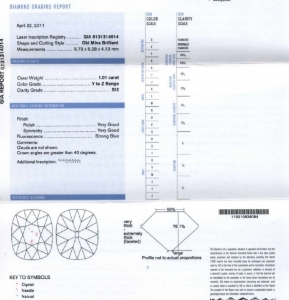
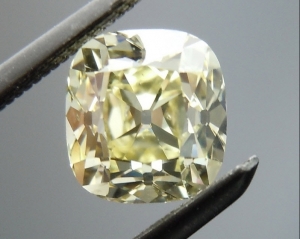
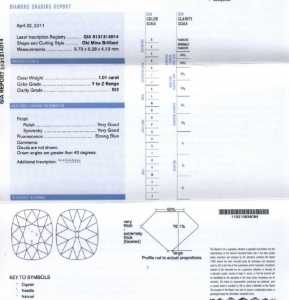
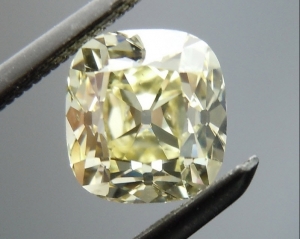
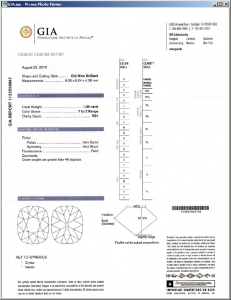
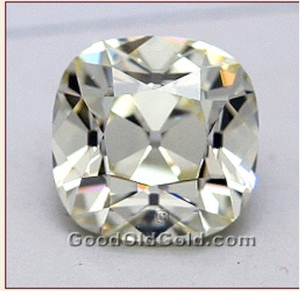
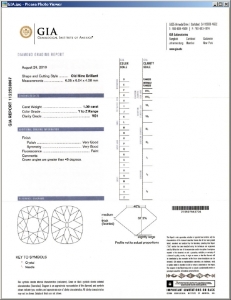
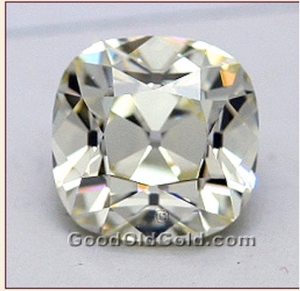


300x240.png)